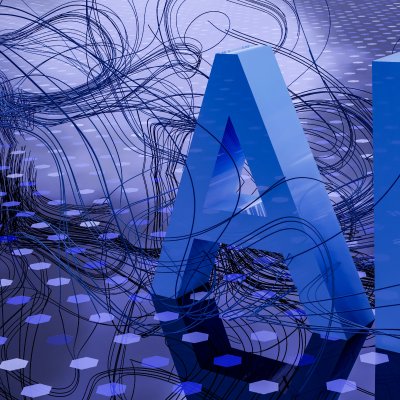Luckily, artificial intelligence (AI) is stepping in to revolutionise the restoration process, breathing new life into these aging media formats and making them accessible for generations to come.
The Challenges of Traditional Restoration
Traditionally, restoring old media has been a painstaking and expensive process. It often involves manual cleaning, chemical treatments, and frame-by-frame retouching, requiring specialised equipment and expertise. This can be prohibitively expensive for many, and the delicate nature of the materials means there's always a risk of further damage.
AI: The Restoration Game Changer
AI is changing the game by automating many of the tedious and time-consuming tasks involved in media restoration.Using sophisticated algorithms and machine learning, AI can analyse and enhance images and audio with remarkable accuracy. Here's how:
- Film Restoration: AI can identify and remove scratches, dust, mould, and other imperfections from film scans. It can even stabilise shaky footage and reconstruct damaged frames, making old films watchable again. Imagine those home movies from your childhood, brought back to life with vibrant colours and crisp details.
- Cine film Restoration: Similar to film restoration, AI can work wonders on cine film. It can stabilise the image, remove flicker, repair perforations, and even upscale the resolution, revealing details you never knew existed.
- VHS Tape Restoration: VHS tapes are notorious for their degradation. AI can reduce noise, improve colour balance, and sharpen blurry images, making those old recordings of family gatherings or favourite TV shows watchable once more. It can even attempt to recover audio from damaged tapes.
- Audio Tape Restoration: Crackle, hiss, and pops are the bane of audio tape enthusiasts. AI algorithms can identify and remove these unwanted noises, while also enhancing the overall audio quality. Imagine listening to your favourite old records or cassette tapes with clarity and richness you haven't heard in years.
How AI Restoration Works
AI-powered restoration tools typically work by training on vast datasets of damaged and restored media. The AI learns to recognise patterns and identify common flaws, allowing it to automatically correct them in new images and audio. Some tools even allow users to fine-tune the restoration process, giving them more control over the final result.
The Benefits of AI Restoration
- Speed and Efficiency: AI can automate many aspects of the restoration process, significantly reducing the time and cost involved.
- Improved Quality: AI algorithms can often achieve better results than manual methods, revealing details and correcting imperfections that would be difficult or impossible to address otherwise.
- Accessibility: AI-powered restoration tools are becoming increasingly accessible, making it easier for individuals and institutions to preserve their valuable media.
- Preservation for Future Generations: By restoring old media, we can ensure that these precious memories are preserved for future generations to enjoy.
The Future of Media Restoration
As AI technology continues to advance, we can expect even more impressive results in the field of media restoration. Imagine AI that can automatically colorise black and white films, or even reconstruct lost or damaged portions of recordings. The possibilities are endless.
Artificial intelligence is revolutionising the way we restore and preserve our precious memories. By automating tedious tasks and achieving remarkable results, AI is breathing new life into old film, cine film, VHS tapes, and audio cassettes, ensuring that these irreplaceable pieces of history are not lost to time. It's an exciting time for media preservation, and AI is leading the charge.
You can view some real life examples here >>>>>






